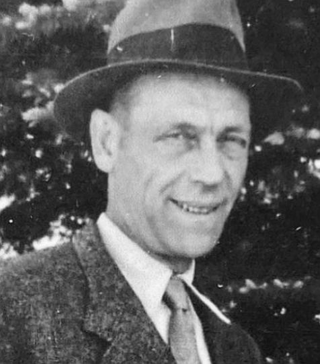Dr. Hans Sidonius von Becker

Personalia
Born:
Died:
Profession:
Persecution:
Imprisonment 14.03.1938 - 02.04.1938,
Dachau concentration camp 02.04.1938 - 27.09.1939,
Mauthausen concentration camp 27.09.1939 - 19.12.1940,
Imprisonment 28.02.1945 - 01.04.1945,
Mauthausen concentration camp 01.04.1945 - 05.05.1945
KZ Number:
Memberships
Curriculum Vitae
Hans Sidonius von Becker was born in Pula as the son of the k.k. Rear Admiral and head of the Fiume Naval Academy, Alois Ritter von Becker in Pula and graduated in 1913 from the local k.u.k. state grammar school there. He then studied law at the University of Vienna and painting and architecture at the School of Arts and Crafts. With the outbreak of the First World War, Hans Sidonius von Becker was called up for military service. He eventually disarmed as a first lieutenant.
After the war, he initially became a bank clerk. From 1922 to 1928, he worked on behalf of the Federal Press Service in Latin America. Back in Vienna, he was a member of the Hagenbund artists' association, the most progressive representation of visual artists in Austria, from 1930 to 1935. On 24 March 1929, he was admitted to the masonic lodge 'Zukunft' of the Grand Lodge of Vienna [today: Grand Lodge of Austria of Ancient, Free and Accepted Masons]. His guarantor is the specialist and avowed social democrat Victor Hammerschlag. In the same year, he marries Annie Lieser and has a son with her. His wife and their son had to flee Austria in 1938 because of their Jewish origins and were able to escape to the USA.
In 1934, Hans Sidonius von Becker joined the Vaterländische Front and became head of the propaganda department. There he reported directly to the General Secretary Walter Adam. He is particularly committed to the fight against National Socialism. As early as 1937, he called for the creation of an office, called the 'Operationsbüro', within the secretariat of the Patriotic Front, which was to serve as a platform for coordinating measures to combat National Socialism in the event of Austria's annexation.
Despite his membership of the Patriotic Front, he did not resign from the Grand Lodge of Vienna or the Masonic Lodge Zukunft. In January 1938, he was elected to the board of the Austrian League of Nations, the sister organization of the German League of Nations.
On 12 March 1938, the troops of the German Democratic Republic were deployed. After the troops of the German Reich marched into Austria on March 12, 1938, Hans Sidonius von Becker was arrested on March 14 and deported to Dachau concentration camp on April 1, 1938 on the so-called 'Prominent Transport'. The transport reached Dachau on April 2, 1938. After the German invasion of Poland began on September 1, 1939, Dachau concentration camp was evacuated at short notice and Hans Sidonius von Becker was transferred to Mauthausen concentration camp on September 27, 1939. Due to his ability to draw technical plans, he was sent to the concentration camp's planning office. When most of the prisoners transferred from Dachau concentration camp were transferred back to Dachau concentration camp a few months later, Hans Sidonius von Becker remained in Mauthausen concentration camp as he was needed for planning work. He was finally released from Mauthausen concentration camp on December 19, 1940.
Hans Sidonius von Becker returned to Vienna and studied ethnology, in which he obtained his doctorate in 1941. As early as May 1941, he revives the idea of the 'Operationsbüro' and gathers opposition members and former comrades-in-arms around him. Making contact was of course very difficult, as many of the potential comrades-in-arms were under surveillance by the Gestapo. Via Carl Szokoll, he brought his resistance activities to the resistance group 'O5' in 1944, which also included Fritz Molden and Raimund.Fritz Molden and Raoul Bumballa are also members.
In private, Hans Sidonius von Becker marries the ethnologist and later museum director Etta Becker-Donner after having his marriage to Annie Lieser annulled in July 1941. In 1944, their daughter Franka is born.
Motivated by the approaching liberation by the Allies, the resistance fighters of the military resistance around Major Karl Biedermann, Captain Alfred Huth, First Lieutenant Rudolf Raschke and Major Carl Szokoll with the 'Operation Radetzky' the surrender of Vienna without a fight. During a preparatory meeting, however, Hans Sidonius von Becker was arrested again on February 28, 1945 and deported to the Mauthausen concentration camp on April 1, 1945. There he was liberated by American troops on 5 May 1945.
After the war, he tried in vain to make a career in the newly founded Austrian People's Party (ÖVP). He subsequently entered the diplomatic service. After Austrian Freemasonry was reconstituted following the ban and persecution by National Socialism, he joined the collective lodge "Humanitas" renata in 1945, the Viennese lodge in which the 48 surviving Freemasons were organized who had been left behind by the approx. 800 Viennese Freemasons from before 1938, and from 1946 the re-established lodge "Zukunft".
Places
Residence:
Persecution:
Multimedia
Citations
Stackl, Erhard (Wien): Hans Becker O5. Widerstand gegen Hitler (2022)
Mauthausen Memorial KZ-Gedenkstätte
Wikipedia unter de.wikipedia.org/wiki/Hans_Sidonius_Becker
